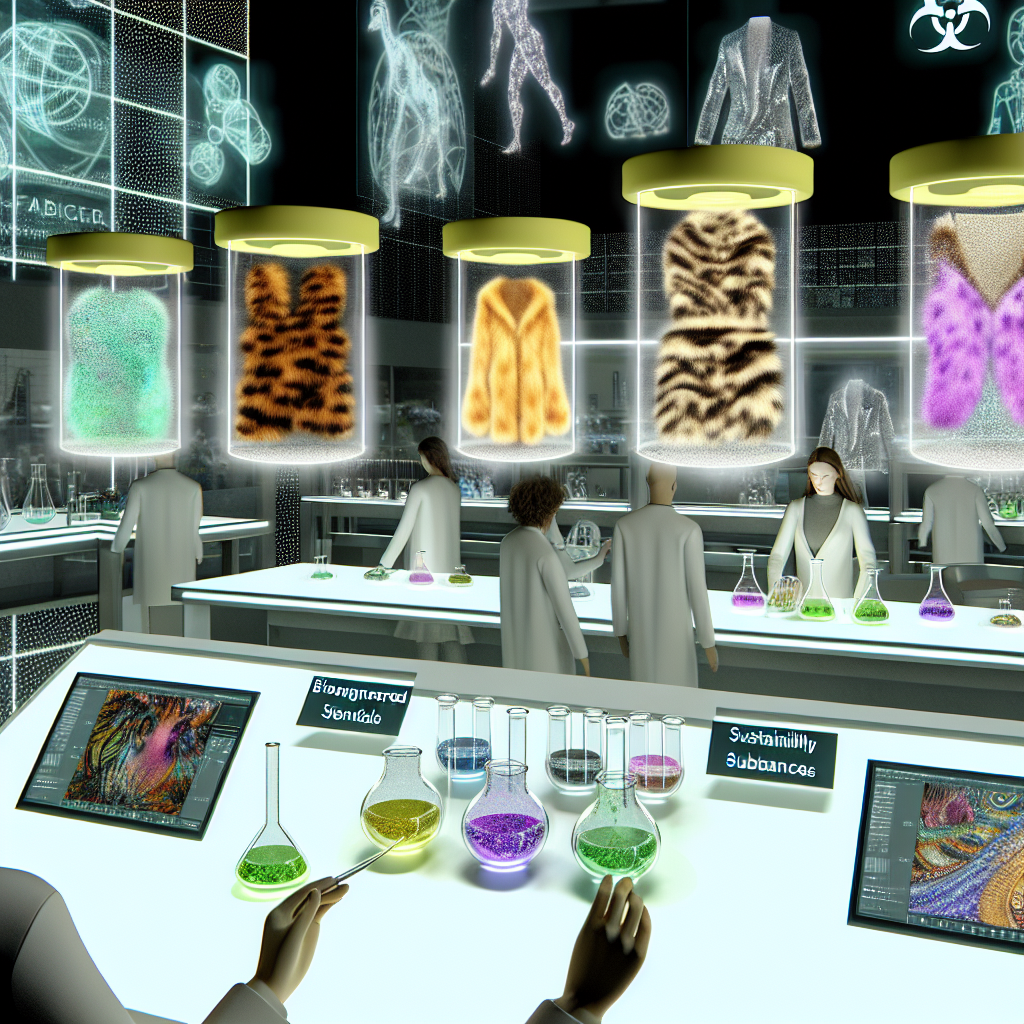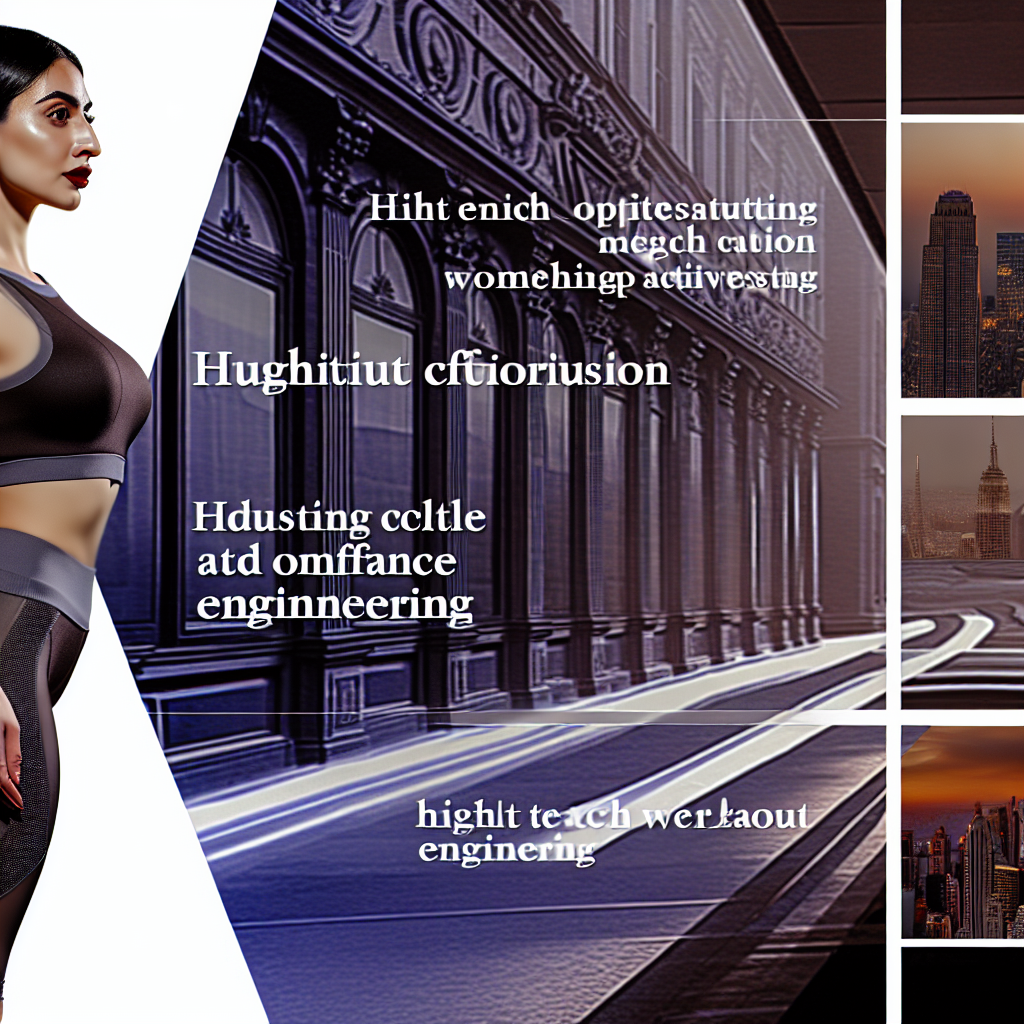Here is the cleaned up and expanded version of the blog post:
Bioengineered Luxury: Lab-Grown Exotic Materials Revolutionizing Ethical Fashion
In a world where conscious consumerism intersects with high luxury, bioengineered exotic materials have emerged as the zenith of sophisticated, sustainable innovation. Lavish wardrobes have traditionally leaned on rare animal skins, precious leathers, and coveted furs — resources that, while beautiful, often carried significant ethical and environmental costs.
Today, thanks to groundbreaking advancements in biotechnology, the fashion world stands on the precipice of a stunning revolution: lab-grown materials that mimic and even surpass the allure of their traditional counterparts without the moral compromise.
Leading the Charge: Scientific Innovators Redefining Materials
Leading the charge in this scientific renaissance are companies and research institutions breaking unprecedented ground. A pivotal study published in *Nature Biotechnology* outlines how biofabrication techniques, such as 3D tissue engineering, are used to recreate the fibrous microstructures of animal hides without the need for slaughter. By cultivating collagen — the primary protein in animal skin — scientists are able to grow fully-formed leather sheets in sterile lab environments, customizable by strength, texture, and design.
Modern Meadow, one of the pioneers in the field, developed **Zoa**, a customizable bioleather grown from collagen produced by yeast fermentation processes. According to an article in *Advanced Materials*, Zoa’s mechanical resilience and luxurious feel were found to be indistinguishable from high-end calfskin yet offered a significantly lighter environmental load, including a **79% reduction in carbon emissions** compared to traditional leather tanning operations.
Nature’s Alternate Narrative: The Rise of Mycelium Leather and Programmable Silk
Similarly, biotech firm Bolt Threads has created **Mylo**, a mycelium-based leather alternative derived from mushroom roots. Extensive research, as published in *Materials Today Biology*, shows that mycelium materials can be grown within mere days, require little to no toxic chemical processing, and are biodegradable.
Mylo has already been adopted by luxury brands like Stella McCartney, a trailblazer in sustainable haute couture.
Moreover, the Massachusetts Institute of Technology (MIT) is spearheading innovations in programmable silk production, where genetically engineered yeast cells assemble proteins identical to those spun by spiders. The *Journal of the Royal Society Interface* notes that these lab-grown silks not only match but potentially outperform natural spider silk in terms of tensile strength and elasticity, offering high-end fashion architects novel ways to redefine performance textiles.
Beyond Beauty: Biomedical Breakthroughs Elevating Ethical Couture
Medical studies also reinforce the bio-compatibility and durability of lab-grown materials. A report from *Frontiers in Bioengineering and Biotechnology* emphasizes how lab-cultivated leathers can be tailored to be hypoallergenic, ultra-lightweight, and structurally superior to animal-derived products.
This versatility allows for unprecedented creativity in fashion design, giving birth to haute couture pieces that are not only visually stunning but also functionally superior and ethically produced.
By strategically investing in bioengineered luxury, fashion is not merely creating alternatives — it is cultivating new cornerstones of prestige, aligning discerning tastes with future-ready innovations.
The Future of Fashion: Where Ethical Innovation Becomes Glamorous
Bioengineered exotic materials represent more than just the next trend in luxury fashion; they symbolize an ethical paradigm shift towards conscientious elegance.
As biotechnology advances, the fusion of sustainability and sophistication is becoming not only possible but highly desirable. For those who believe that the future of luxury lies in the unwavering pairing of innovation and ethics, lab-grown materials deliver a breathtakingly modern answer.
The era of guilt-free grandeur has arrived — and it is exquisitely bioengineered.
Concise Summary:
Bioengineered exotic materials are revolutionizing luxury fashion, providing sustainable and ethical alternatives to traditional animal-derived materials. Leading companies and research institutions are pioneering innovations in biofabrication, mycelium leathers, and programmable silks, delivering luxurious textures and performance without the environmental and moral compromises of the past. This fusion of cutting-edge biotechnology and sophisticated design represents the future of conscientious elegance.
References:
[Nature Biotechnology – Engineered tissues for fashion](https://www.nature.com/articles/s41587-020-0520-6)
[Advanced Materials – Engineered bioleather with enhanced properties](https://onlinelibrary.wiley.com/doi/full/10.1002/adma.201905246)
[Materials Today Biology – Sustainable mycelium leather production](https://www.sciencedirect.com/science/article/pii/S2590006420300304)
[Journal of the Royal Society Interface – Synthetic spider silk fabrication](https://royalsocietypublishing.org/doi/10.1098/rsif.2018.0881)
[Frontiers in Bioengineering and Biotechnology – Biomedical assessment of tissue-engineered leathers](https://www.frontiersin.org/articles/10.3389/fbioe.2020.00253/full)

Dominic E. is a passionate filmmaker navigating the exciting intersection of art and science. By day, he delves into the complexities of the human body as a full-time medical writer, meticulously translating intricate medical concepts into accessible and engaging narratives. By night, he explores the boundless realm of cinematic storytelling, crafting narratives that evoke emotion and challenge perspectives. Film Student and Full-time Medical Writer for ContentVendor.com




